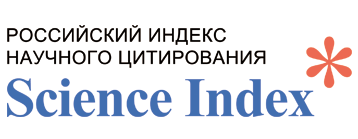STUDY OF SORPTION PROPERTIES OF NATURAL ZEOLITE IN RELATION TO CATIONS Co2+, Ni2+ AND V4+ FROM AQUEOUS MEDIA BY SATURATION METHOD
DOI:
https://doi.org/10.51580/2025-3.2710-1185.43Keywords:
natural zeolite, saturation method, sorption, cobalt, nickel and vanadium cationsAbstract
Introduction. The presence of heavy metals in aquatic environments creates environmental problems. Sorption treatment with zeolite from the Shankanai deposit is a promising method for removing heavy metal ions from aqueous solutions due to its high selectivity, cost-effectiveness and environmental sustainability. The aim of the work is to study the sorption properties of natural zeolite with respect to Co2+, Ni2+ and V4+ cations from aqueous media using the saturation method. Results and discussion. Studies were carried out using the saturation method on the sorption of individual Co2+, Ni2+ and V4+ cations by natural zeolite and in two metal-containing systems: "Ni2+–Co2+–NZ–H2O"; "Ni2+–V4+–NZ–H2O"; "Co2+–V4+–NZ–H2O" from an aqueous environment. Increasing the concentration of both cobalt (II) and nickel (II) cations in solutions to 10 mg/L increases the degree of Ni2+ sorption by 2.5 times and Co2+ by 4.8 times compared to solutions containing 5.0 mg/L. Maxima are recorded on the sorption curves at C(Ni/Co) = 10 mg/l. The degree of cation sorption in the Ni2+/Co2+/V4+ – H2O systems with the working concentration of the studied cations does not exceed 55% on average. Zeolite in the Ni2+–Co2+–NZ–H2O system exhibits preferential sorption capacity with respect to Ni2+ cations; at CNi = 30 mg/L it absorbs 0.72 mg/L of CO(II) cations and 28.3 mg/L of Ni (II) cations, i.e. RNi>RСо. In the Ni2⁺–V4⁺–PC–H₂O system, the amount of vanadium (IV) absorbed by NZ increases from 18 to 116 mg/L, which is significantly higher than that of sorbed divalent nickel (5 mg/L). This may be a potential evidence of a weak competing effect of Ni2⁺ in the system with an excess of V4⁺ cations. In the Co2+–V4⁺–NZ–H2O system, which includes the vanadium (IV) cation, the cation with a constant content is first completely sorbed by NZ, and then it is additionally saturated with the second cation. At CCo= (0.5-1.0) and 10 mg/L, 97.0 and 95.8% of vanadium, as well as 86.3 and 88.4% of cobalt are simultaneously sorbed. Conclusion. In all the studied systems, an unstable nature of sorption is observed, caused by the effect of coordination interaction between different types of cations, due to the sorption ↔ desorption process occurring in an aqueous solution.

















